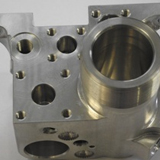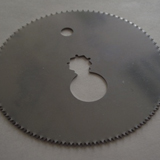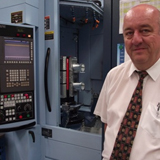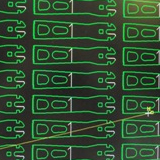



EDGECAM “Won Convincingly” in Search for New Software
Whether it’s using EDGECAM to program complex parts for the medical, military and aerospace markets on three different types of milling machine, or nesting and laser cutting surgical blades with RADAN, the software is essential for keeping a precision engineering subcontractor competitive.Bushell & Meadows have two main areas of expertise:
- High speed CNC machining of complex, precision components from a variety of materials mainly aerospace grade aluminium, titanium and stainless steel. Quantities vary from small batches and prototypes, right up to machine runs of 100 or more.
- High Quality Surgical Blades made from high grade surgical steel. Quantities range from small batch to volume production of thousands for the medical market
EDGECAM drives their four Fadal machining centres, which all have 4th axis indexing heads; their two Matsuura horizontal mills which can hold up to 240 tools; and a Haas vertical machining centre. Business Development Manager Ian Mence (pictured below) says: “Without EDGECAM we just couldn’t program the machines in an efficient manner because they are particularly complex.”
The parts are for a variety of applications which all require tolerances of less than 10 microns. “For us, it’s not about what EDGECAM’s main benefits are – we need the whole package in order to do what we do.”
He says with three different types of mills it is absolutely fundamental that one software package drives them all. “There’s no point in having software that will only program one type of machine. It has to be able to handle machines across the range of manufacturers, which EDGECAM takes in its stride.”
The Company has invested heavily in new machine technology and needed a software package that could programme all their milling machines efficiently. “Following a market sweep we narrowed it down to a shortlist of three, and EDGECAM won convincingly,” says Ian Mence.
One of the reasons being the way EDGECAM handles the tool store database. “We can easily create what I call a ‘crib’ for the machine, where we pre-set a number of tools, feeds and speeds in a database, and pull it out to the ‘crib.’ For example, one of our machines has 180 tools, another has 120 and each machine does have common tooling but also has different tools for different jobs. EDGECAM provides us with a dedicated tool database for each machine which is an integral part of our process. This allows to then load a ‘Family of parts’ onto one machine and not have to swop tooling around between machines or change tooling which all takes time, and time is money.”
They also find EDGECAM’s collision detection function to be particularly valuable. “We run the whole program through the simulation mode before it gets on to the machine. If we were to have a collision the repair bill could be around £7,000.”
All milling work is programmed on EDGECAM at the Tewkesbury-based company, in the same way that every surgical blade is created by a RADAN program that drives their Trumpf Trumatic laser (pictured right). This produces 10,000 blades of different varieties and sizes each month, which means they need to ensure absolute minimum material wastage. RADAN’s powerful nester takes care of that, calculating the most efficient way of nesting a set of blades.
“On the nest we need each blade to be a set distance apart from its neighbour to avoid damage caused by ‘sputter’ from the laser. The RADAN nester optimises the parameters we’ve set for this, perfectly.”
And Ian Mence says importing files into RADAN and EDGECAM couldn’t be easier. “Typically, for the precision machined components we get a PDF file of the drawing and a solid model which has been generated by a design CAD package, typically SolidWorks or ProE. Our programmer Dave Williams (pictured left) imports the model into EDGECAM, creates the machining model and the machine programme and exports it to the Machine after proving the programme off-line.
“For the surgical blades, dxf file formats are imported into RADAN which then nests them onto the pre-determined sheet size for each thickness we use; we can then export the machine programme directly to our Laser and cut the blades.
“At the end of the day, we’re a machine shop. Every hour we’re not manufacturing costs us money, so we want our software to provide the quickest and most cost effective way of getting to the point where we can push the button for our machines to start cutting the metal. EDGECAM and RADAN do that quickly and efficiently.”










